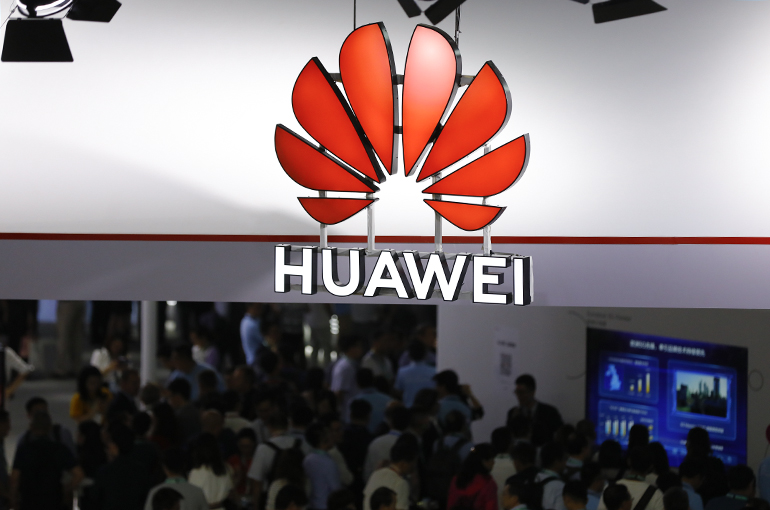 Huawei's Profit Falls 28% to USD8.6 Billion in 2024, In Line With Forecast
Huawei's Profit Falls 28% to USD8.6 Billion in 2024, In Line With Forecast(Yicai) April 1 -- Huawei Technologies reported its net profit dropped 28 percent last year, but the performance was in line with the Chinese technology giant's predictions due to a high comparable base a year ago.
Net profit was CNY62.6 billion (USD8.6 billion) in the 12 months ended Dec. 31, the Shenzhen-based firm said in a financial report released yesterday. Revenue rose 22 percent to CNY862.1 billion (USD118.2 billion).
The drop in profit was mainly because of a high comparison base from 2023, which included gains from divested subsidiaries and business units.
"In 2024, the entire team at Huawei banded together to tackle a wide range of external challenges while further improving product quality, operations quality, and operational efficiency," said Rotating Chairwoman Meng Wanzhou. "Our performance was in line with forecast."
"Without the income from divested units, this year's financial report more accurately reflects the true state of business development," an insider from Huawei told Yicai.
Revenue at Huawei's intelligent auto solutions unit grew the fastest among the five income sources disclosed by the company, surging 474 percent to CNY26.4 billion.
Huawei has allied with four carmakers to develop and launch various Harmony Intelligent Mobility Alliance vehicles under four brands: Aito, Luxeed, Stelato, and Maextro. Over 430,000 autos under HIMA were delivered last year, while the alliance ranked first in average transaction price in China's high-end segment for five straight months.
Revenue from information and communication technology infrastructure climbed 4.9 percent to CNY369.9 billion, while that from the consumer business surged 38 percent to CNY339 billion, Huawei noted.
Huawei ranked first in the global telecommunications equipment market last year with a 31 percent market share, according to data from consulting firm Dell'Oro Group.
Huawei's phone market share in China topped 18.1 percent for the year after reaching 24 percent in the fourth quarter, Counterpoint Research data showed. Its sales rose 24 percent in the three months ended Dec. 31 from a year ago, with the Mate 70 series driving a 32 percent surge in the premium segment of devices priced over USD600. The firm took 35 percent of the foldable phone market, surpassing Samsung's 23 percent.
Revenue from Huawei's cloud computing business jumped 8.5 percent to CNY38.5 billion last year from the previous year and that from digital power soared 24 percent to CNY68.7 billion, the company said.
By region, income from China surged 31 percent to CNY615.4 billion, or more than 71 percent of the total, with revenue from Europe, the Middle East, and Africa climbing 2.1 percent to CNY148.4 billion, from the Asia-Pacific region rising 5.5 percent to CNY43.3 billion, and from the Americas increasing 2.7 percent to CNY36.3 billion.
Huawei spent CNY179.7 billion on research and development last year, with its cumulative R&D expenditure over the past decade exceeding CNY1.25 trillion (USD172.2 billion).
Ecosystem Development in 2025
Huawei will continue strengthening its foundational ecosystems this year, including Huawei Cloud, Kunpeng, Ascend, and HarmonyOS, Meng said.
The Kunpeng and Ascend ecosystems had attracted 6.65 million developers and over 8,500 partners as of the end of last year, while HarmonyOS reached a significant milestone with over 7.2 million developers and installations on more than one billion devices.
HarmonyOS saw its global market share double to 4 percent in the first quarter of last year, according to Counterpoint Research. Its China share topped 17 percent, crossing the critical 16 percent threshold and surpassing Apple's iOS for the first time. The most recent data shows that HarmonyOS's share has reached 19 percent.
"Building HarmonyOS is like constructing the Tower of Babel," one developer said to Yicai, adding that perseverance in the global operating system arena is necessary for Chinese manufacturers to gain control rather than merely excelling in isolated components.
Developing ecosystem capabilities like Kunpeng, Ascend, and HarmonyOS will determine whether Huawei can maintain its global techological leadership in the artificial intelligence era, according to analysts.
"AI has taken the world by storm," Meng pointed out. "The extent of its impact isn't just the change it has brought, but the sheer speed of change.
"Over the next decade, demand for AI computing power will continue to grow, creating huge opportunities for computing systems with broader, more holistic strengths," Meng said. "The next one or two years will define the competitive landscape for AI devices."
New AI devices, intelligent connected vehicles, and AI agents will generate massive new connections, driving demand for higher uplink bandwidth, lower latency, and more intuitive human-machine interaction, Meng noted.
"While we embrace opportunity, we reject opportunism," Meng stated, emphasizing Huawei's commitment to long-term development. "We're not anxious nor at a loss. We aren't rushing recklessly ahead. And we're not driven by short-term bubbles.
"We keep our feet firmly on the ground, building foundational technologies and striving to do better every step of the way," Meng said.
Editor: Martin Kadiev